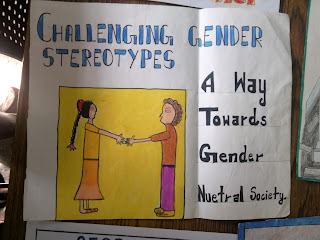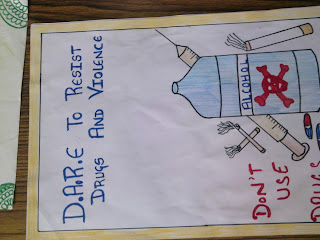Most Respected Sir, Good Evening Sir,
With your blessings, I am extremely happy to inform you that I have completed Science SA2 Reference Study materials of Class IX - X and revised Maths SA2 Questions bank for all classes VI to X.
Please the below link to download the materials:
SCIENCE SA-2 REFERENCE/STUDY MATERIALS
Physics Class IX for SA-II 2016-17
https://kumarsir34.files.wordpress.com/2016/11/physics-class-ix-for-sa-ii-2016-17.pdf
Chemistry Class IX for SA-II 2016-17
https://kumarsir34.files.wordpress.com/2016/12/chemistry-class-ix-for-sa-ii-2016-17.pdf
Biology Class IX for SA-II 2016-17
https://kumarsir34.files.wordpress.com/2016/12/biology-class-ix-for-sa-ii-2016-17.pdf
Physics Class X for SA-II 2016-17
https://kumarsir34.files.wordpress.com/2016/11/physics-class-x-for-sa-ii-2016-17.pdf
Chemistry Class X for SA-II 2016-17
https://kumarsir34.files.wordpress.com/2016/11/chemistry-class-x-for-sa-ii-2016-17.pdf
Biology Class X for SA-II 2016-17
https://kumarsir34.files.wordpress.com/2016/11/biology-class-x-for-sa-ii-2016-17.pdf
MATHEMATICS SA-2 STUDY MATERIALS
Maths Class VI Question Bank for SA-II 2016-17
https://kumarsir34.files.wordpress.com/2016/11/maths-class-vi-question-bank-for-sa-ii-2016-17.pdf
Maths Class VII Question Bank for SA-II 2016-17
https://kumarsir34.files.wordpress.com/2016/11/maths-class-vii-question-bank-for-sa-ii-2016-17.pdf
Maths Class VIII Question Bank for SA-II 2016-17
https://kumarsir34.files.wordpress.com/2016/11/maths-class-viii-question-bank-for-sa-ii-2016-17.pdf
Maths Class IX Question Bank for SA-II 2016-17
https://kumarsir34.files.wordpress.com/2016/11/maths-class-ix-question-bank-for-sa-ii-2016-17.pdf
Maths Class X Question Bank for SA-II 2016-17
https://kumarsir34.files.wordpress.com/2016/11/maths-class-x-question-bank-for-sa-ii-2016-17.pdf
Maths PSA Quantitative Aptitude for Class VI 2016-17
https://kumarsir34.files.wordpress.com/2016/11/maths-psa-quantitative-aptitude-for-class-vi-2016-17.pdf
Maths PSA Quantitative Aptitude for Class VII 2016-17
https://kumarsir34.files.wordpress.com/2016/11/maths-psa-quantitative-aptitude-for-class-vii-2016-17.pdf
Maths PSA Quantitative Aptitude for Class VIII 2016-17
https://kumarsir34.files.wordpress.com/2016/11/maths-psa-quantitative-aptitude-for-class-viii-2016-17.pdf
Please visit my website: www.kumarsir34.wordpress.com to download other study materials.
Looking for your blessings in the form of your reply/feedback in this regards.
- With regards, Kumarswamy
https://kumarsir34.wordpress.com
With your blessings, I am extremely happy to inform you that I have completed Science SA2 Reference Study materials of Class IX - X and revised Maths SA2 Questions bank for all classes VI to X.
Please the below link to download the materials:
SCIENCE SA-2 REFERENCE/STUDY MATERIALS
Physics Class IX for SA-II 2016-17
https://kumarsir34.files.wordpress.com/2016/11/physics-class-ix-for-sa-ii-2016-17.pdf
Chemistry Class IX for SA-II 2016-17
https://kumarsir34.files.wordpress.com/2016/12/chemistry-class-ix-for-sa-ii-2016-17.pdf
Biology Class IX for SA-II 2016-17
https://kumarsir34.files.wordpress.com/2016/12/biology-class-ix-for-sa-ii-2016-17.pdf
Physics Class X for SA-II 2016-17
https://kumarsir34.files.wordpress.com/2016/11/physics-class-x-for-sa-ii-2016-17.pdf
Chemistry Class X for SA-II 2016-17
https://kumarsir34.files.wordpress.com/2016/11/chemistry-class-x-for-sa-ii-2016-17.pdf
Biology Class X for SA-II 2016-17
https://kumarsir34.files.wordpress.com/2016/11/biology-class-x-for-sa-ii-2016-17.pdf
MATHEMATICS SA-2 STUDY MATERIALS
Maths Class VI Question Bank for SA-II 2016-17
https://kumarsir34.files.wordpress.com/2016/11/maths-class-vi-question-bank-for-sa-ii-2016-17.pdf
Maths Class VII Question Bank for SA-II 2016-17
https://kumarsir34.files.wordpress.com/2016/11/maths-class-vii-question-bank-for-sa-ii-2016-17.pdf
Maths Class VIII Question Bank for SA-II 2016-17
https://kumarsir34.files.wordpress.com/2016/11/maths-class-viii-question-bank-for-sa-ii-2016-17.pdf
Maths Class IX Question Bank for SA-II 2016-17
https://kumarsir34.files.wordpress.com/2016/11/maths-class-ix-question-bank-for-sa-ii-2016-17.pdf
Maths Class X Question Bank for SA-II 2016-17
https://kumarsir34.files.wordpress.com/2016/11/maths-class-x-question-bank-for-sa-ii-2016-17.pdf
Maths PSA Quantitative Aptitude for Class VI 2016-17
https://kumarsir34.files.wordpress.com/2016/11/maths-psa-quantitative-aptitude-for-class-vi-2016-17.pdf
Maths PSA Quantitative Aptitude for Class VII 2016-17
https://kumarsir34.files.wordpress.com/2016/11/maths-psa-quantitative-aptitude-for-class-vii-2016-17.pdf
Maths PSA Quantitative Aptitude for Class VIII 2016-17
https://kumarsir34.files.wordpress.com/2016/11/maths-psa-quantitative-aptitude-for-class-viii-2016-17.pdf
Please visit my website: www.kumarsir34.wordpress.com to download other study materials.
Looking for your blessings in the form of your reply/feedback in this regards.
- With regards, Kumarswamy
https://kumarsir34.wordpress.com




















































